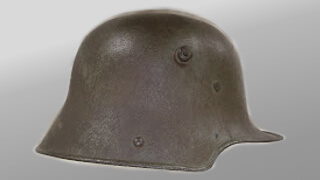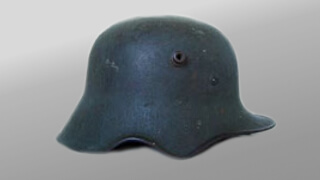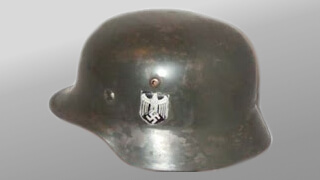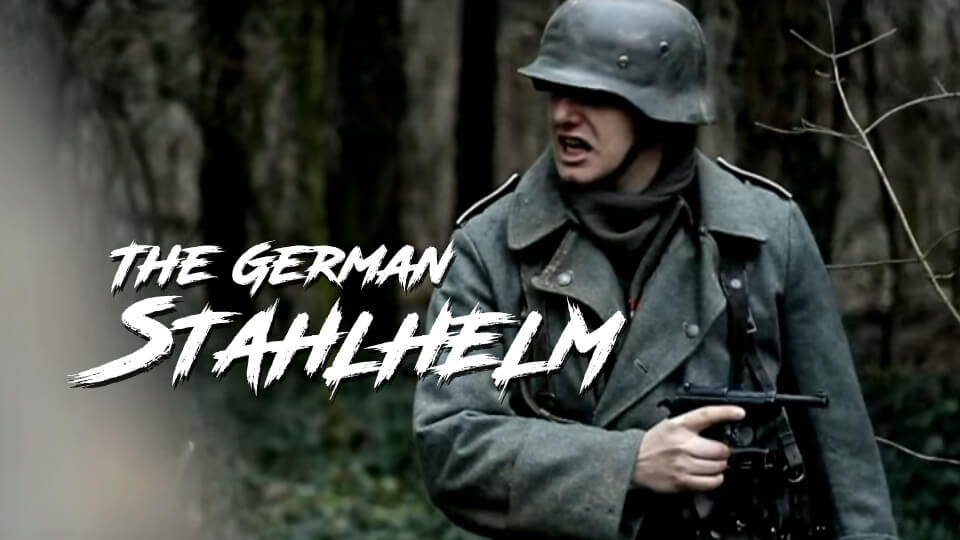Considered to be one of the best protective headgears of the Second World War, the German Stahlhelm or 'Steel Helmet' has a huge influence on present-day military and police headgear. The American Army helmet heavily borrows from the M-35 Stahlhelm. The Stahlhelm evolved from the Pickelhaube, meaning spiked helmet, which was made of boiled leather. The Pickelhaube provided insufficient protection, and hence numerous casualties from head injuries. Although the Germans lost the War, well, both the Wars, the German soldiers were ironically admired by their enemies, allies, and their counterparts alike for their ruthlessness and distinctive uniform. The helmets made the army uniform stand out.
In 1916, the Pickelhaube was removed from German service and replaced by the M-16 Stahlhelm. The M-16 was an improvement of a prototype designed by Dr. August Bier and Frederich Schwerd. This model was tried and tested in the war and proved to be quite successful. However, due to the shape of the helmets, some of the soldiers' hearing was impaired due to resonance in the trenches.

A new model was needed, and so a new model was introduced. In 1917, the M-17 was born. It was designed to alleviate the failing of the M-16 strap lugs that were falling off in battle. A leather strap was fitted onto the M-17 and fastened to the liner band directly.
In 1918, the troops were issued with the M-18. A close cousin to its predecessor, this model was referred to as the 'cutout' helmet. It resembled the M-17 in most respects, but both sides of the neck-guard were cut off for the ears. This model provided better hearing and telephone usage. Moreover, there were reduced cases of deafness. Despite this new design being received with enthusiasm by the troops, there was limited distribution of the M-18.

After WW1 in 1916 and the signing of the Treaty of Versailles', many M-16, M-17 and M-18 models were destroyed as a means of pursuing the treaty and crushing future German efforts. However, these models were rebuilt for use by the army and police.
The M-35 was first issued to the troops on July 1st, 1935. It was more developed than earlier models, and all transitional helmets were distinct. The helmet stood out from all other models in that the visor was in line with the eyebrow; there were brushing vents on both sides for efficient ventilation with no frontal plate. It came in different sizes with the sizes stamped on.
In 1940, the model M-40 was designed. It borrowed closely from the M-35 except that it did not have a tri-colored shield and the Wehrmachtadler. It also had more holes on the sides to increase ventilation for combat. Many M-35 helmets were exported to countries mainly in the Third Reich and the Weimar Republic. The chief importers in these regions were China and Argentina.

In 1942, yet another model was produced, the M-43 (referred to as the M-43 since it was introduced in the UK in 1943). Due to production difficulties and limited availability of raw materials caused by the war, it was made with only one sheet of steel. This model was produced till the war ended and was used by the service branches of the Wehrmacht and auxiliary formations such as HJ squads and Schutzmannschaft Police.
In a nutshell, Germany produced such a wide range of helmets in the early 20th century than any other nation. Each model although similar in concept, had a different shape, design, and purpose and proved to be the most efficient of all helmets used in the war. That's the evolution of helmets for you. Fascinating, huh?

